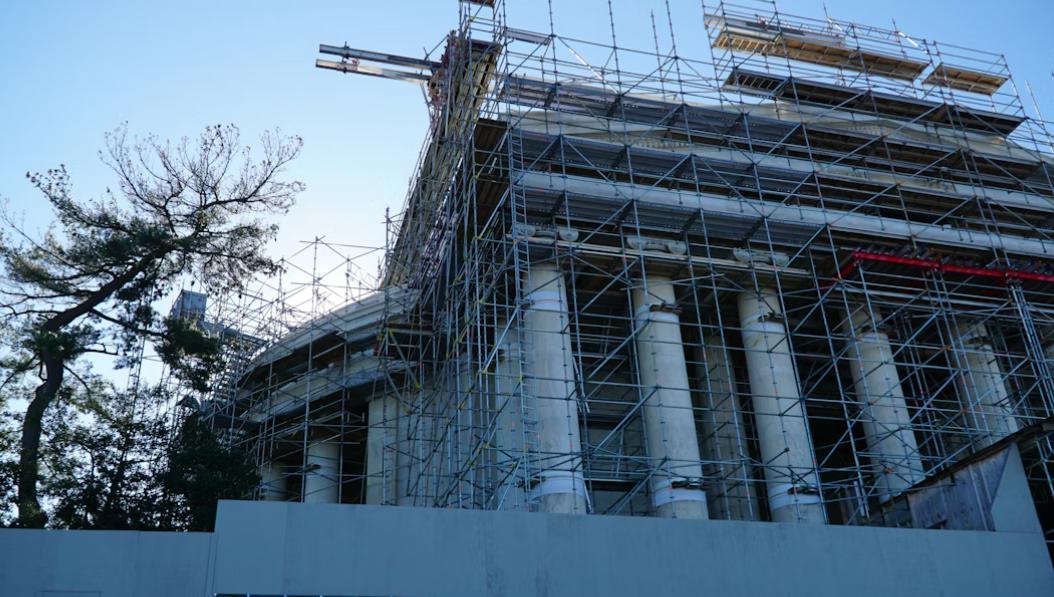Securing and managing new construction loans is a crucial aspect of successful real estate development. These loans provide the necessary capital to fund the building of new residential or commercial properties from the ground up.
At Insula Capital Group, a trusted private money lender with over 30 years of experience, we understand the unique challenges faced by developers. Our hard-money construction loans are designed to provide the flexible, fast, and reliable financing you need to bring your vision to life.
The truth is that understanding the intricacies of new construction loans can help developers navigate the financing process more effectively, ensuring projects are completed on time and within budget. So, let’s take a look at that.
Understanding New Construction Loans
What Are New Construction Loans?
New construction loans are short-term, high-interest loans designed to cover the costs of constructing a new building.
Unlike traditional mortgages, which are based on the property’s existing value, new construction loans are based on the projected value of the completed project.
These loans typically last for the duration of the construction period, after which they must be converted into a permanent mortgage or paid off in full.
Types of New Construction Loans
Several types of new construction loans cater to different project needs and developer preferences:
- Construction-to-Permanent Loans: These loans encompass both the construction period and the mortgage for the finished property. Initially, the loan funds the construction, and once the project is complete, it converts into a permanent mortgage.
- Stand-Alone Construction Loans: Also known as “two-close” loans, these are short-term loans that cover the construction period. Once construction is complete, the developer must secure a separate mortgage to pay off the construction loan.
- Owner-Builder Loans: These loans are for developers who also act as the general contractor. Lenders may require proof of the developer’s expertise and qualifications to manage the construction project.
The New Construction Loan Application Process
1. Pre-Qualification and Financial Preparation
Before applying for a new construction loan, developers should prepare their financial documentation and establish a solid credit history. Key steps include:
- Credit Score: Ensure a good credit score, as lenders will evaluate your creditworthiness.
- Financial Statements: Gather personal and business financial statements, including tax returns, bank statements, and proof of income.
- Down Payment: Be prepared to make a substantial down payment, typically ranging from 20% to 30% of the total loan amount.
2. Creating a Detailed Construction Plan
A comprehensive construction plan is essential for securing a new construction loan. This plan should include:
- Project Timeline: Outline the construction schedule from start to completion.
- Budget: Provide a detailed budget, including costs for materials, labor, permits, and contingencies.
- Blueprints and Specifications: Include architectural plans, engineering reports, and detailed project specifications.
- Contractor Information: Provide information about the general contractor and subcontractors involved in the project, including their qualifications and experience.
3. Loan Application and Documentation
Submit the loan application to your chosen lender along with the required documentation. This typically includes:
- Loan Application Form: Complete the lender’s application form with accurate and detailed information.
- Construction Plan: Submit the detailed construction plan outlined above.
- Financial Documentation: Include personal and business financial statements, credit reports, and proof of down payment funds.
4. Appraisal and Underwriting
The lender will conduct an appraisal of the proposed project to determine its projected value upon completion.
The underwriting process will also evaluate your financial stability and the feasibility of the construction plan. Be prepared for:
- Site Inspection: An appraiser may visit the construction site to assess its potential.
- Financial Review: The lender will scrutinize your financial statements and credit history.
- Project Feasibility: The lender will assess the construction plan’s feasibility, including budget accuracy and timeline realism.
5. Loan Approval and Closing
If the loan application is approved, the lender will present a loan agreement outlining the terms and conditions. Key steps include:
- Review Loan Terms: Carefully review the loan agreement, paying attention to interest rates, repayment terms, and any fees.
- Sign the Agreement: Once satisfied with the terms, sign the loan agreement.
- Fund Disbursement: The lender will disburse funds according to the agreed schedule, often in stages tied to construction milestones.
Managing New Construction Loans Effectively
1. Budget and Cost Management
Effective budget management is crucial to prevent cost overruns and ensure the project stays on track. Key strategies include:
- Track Expenses: Maintain detailed records of all expenses and compare them against the budget regularly.
- Adjust for Changes: Be prepared to adjust the budget for unexpected costs or changes in the construction plan.
- Contingency Fund: Reserve a contingency fund, usually amounting to 10-15% of the overall budget, to handle unexpected costs.
2. Monitoring Construction Progress
Regular monitoring of construction progress helps identify and address issues promptly, ensuring the project stays on schedule. Key practices include:
- Site Visits: Conduct regular site visits to oversee the progress and quality of work.
- Progress Reports: Require regular progress reports from the contractor, detailing completed milestones and any delays.
- Issue Resolution: Address any issues or delays immediately to prevent them from escalating.
3. Communication and Collaboration
Maintain open lines of communication with all stakeholders, including lenders, contractors, and project managers.
Effective communication ensures everyone is aligned and any issues are promptly addressed. Key practices include:
- Regular Meetings: Schedule regular meetings with the project team to review progress, discuss challenges, and plan next steps.
- Transparent Updates: Provide transparent updates to lenders and investors, keeping them informed about the project’s status.
4. Preparing for Project Completion
As the project nears completion, begin preparing for the transition from construction loan to permanent financing or sale. Key steps include:
- Final Inspections: Schedule final inspections to ensure the property meets all building codes and standards.
- Loan Conversion: If using a construction-to-permanent loan, work with the lender to convert the loan to a permanent mortgage.
- Marketing and Sale: If selling the property, develop a marketing strategy to attract buyers and facilitate a smooth sale process.
Insula Capital Group — The Experienced Hard Money Lenders For New Constructions
Take the next step in your real estate development journey with Insula Capital Group’s expert financing solutions.
Our new construction hard money loans offer competitive terms, no prepay penalties, and quick funding, ensuring you have the capital necessary to keep your projects on track.
Whether you’re breaking ground on a new development or expanding an existing property portfolio, our dedicated team is here to support you from application to closing.
Reach out to us now and discover how our proven expertise and commitment to excellence can help you achieve your development goals.







